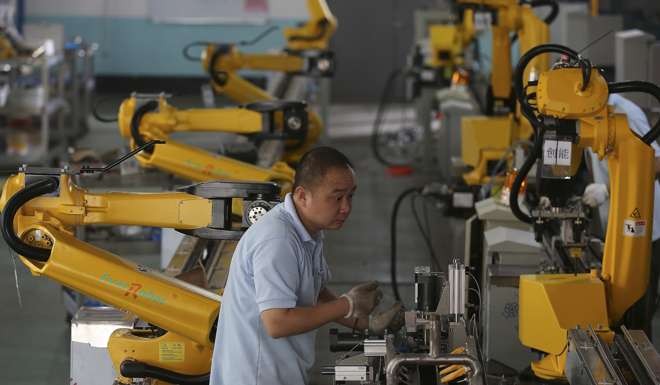
Failure of monetary stimulus calls for new measures to boost global economic growth

It has been one of those conundrums: why have record low interest rates done so little to stimulate economic growth, and lift the world economy out of the quagmire created by the 2008 crash? While there are many possible answers, one seems increasingly clear: demographics.
In short, as communities age across most of the rich part of the world economy and the proportion of working-age people dwindles, so spending patterns are rapidly shifting, and it is getting tougher to stimulate economic growth. As the “baby boomers” so often talked about in recent decades slip into their silver years, so retail consumer spending has become soggy, with more spending on elderly priorities like health care. The stimulus that economists thought would come from rock bottom interest rates has failed to materialise. As a Wall Street Journal report recently noted: “Simply put, companies are running out of workers, customers – or both.”
The economy that illustrates this most vividly is probably China. Over the two decades to 2010, the country’s working-age population leapt by 224 million to 890 million – an increase of 35 per cent, which meant that output growth was easy, and the consumer economy grew like topsy even though average incomes were low. But from the workforce peak of 928 million last year, China is set to see its working-age population shrink by 90 million in the coming two decades, and 190 million by 2050. As more of the population slip out of the workforce into retirement, two economically awkward things happen: consumer demand for “stuff” declines, and output growth that would drive broader economic growth is going to be steadily harder to achieve.
Japan is another powerful case in point. From a working age peak in 1995-2010, hovering around 78 million, the working-age population is set to fall by one third to 60 million by 2030. As the “silver” generation grows rapidly, so consumption patterns have changed. Even though almost a quarter of the over-65s continue to work, productivity and output growth has become progressively tougher to achieve.

The demographic challenge among today’s poorer economies is rather different, but they account for only a small proportion of world consumption, and are likely to remain weak drivers of global economic growth. India – by 2050 expected to become the world’s most populous country – is predicted to have a working population of more than 1 billion by mid-century – up almost 300 million from today. Its workforce is set to overtake that of China somewhere between 2025 and 2030. At the same time, Nigeria is predicted to become the world’s third most populous country, and Indonesia the world’s fifth, by 2050. Indonesia’s workforce is set to almost double over the half century to 190 million.
When you recognise that long term economic growth can come from just two things – more workers or higher productivity – such demographics make it clear that as we move painfully out of our current economic quagmire, it is improved productivity alone that must provide the growth we need. And that is a problem, because productivity growth seems to have been weak over the past decade. But we should not lose hope. At least four forces seem to offer potential stimulus:
•Automation: this has for a long time been an obsession of Japanese business, and perhaps for good reason. Robots, and developments like 3D printing have the potential significantly to boost per capita productivity.
•Immigration: economies like India, Indonesia, Mexico and Nigeria are expected to have large labour surpluses and could readily reduce many of the shortages in the developed world. But according to the International Monetary Fund (IMF), it would take an immediate eight-fold jump in migration from developing countries to meet the shortages that are putting pressure on companies in the rich industrialised world. Given the current ugly mood in Europe and the US towards immigration, it seems unlikely that we will be able to use this “resource” on a scale sufficient to balance our shortages.
•Working longer: there is nothing sacrosanct about retiring at 65, and the World Health Organisation says that today’s average 65-year-old is as healthy as a 58-year-old 40 years ago, and so could work significantly longer than at present. Many governments worrying about the potentially crippling costs of funding pensions and a growing proportion of the population living into their 80s and 90s are keen to explore this, but political opposition is strong in labour movements in many developed economies.
Productivity growth must be stimulated, and monetary stimulus is not going to do the trick
It is also strong among younger people who worry that delayed retirement will thwart promotion prospects. Already, forward thinking companies are making plans.
In Germany, BMW is installing wooden floors and offering workers special shoes to ease joint strain among older workers. They are installing flexible magnifying glasses to help older workers manipulate small parts. And they are using larger font sizes on computer screens. The result of these comparatively minor tweaks has been that older workers’ productivity has risen to match that of younger workers.
•The Digital revolution: this exciting revolution, only in its earliest stages, has already shown great potential in boosting company efficiency by “disintermediating” many costly steps in the chain between a manufacturer and a final consumer. Such job-saving is already having a big impact on productivity in many sectors.
The problem for those leaders meeting over the weekend at the Hangzhou G20 is that they had built their recovery strategy on an assumption that monetary policy and rock-bottom interest rates would restore economic growth. Ten years on, that strategy has clearly failed. Productivity growth must be stimulated, and monetary stimulus is not going to do the trick. Despite demographic headwinds, they have other options, and these must urgently be considered.
David Dodwell is executive director of the Hong Kong-Apec Trade Policy Group